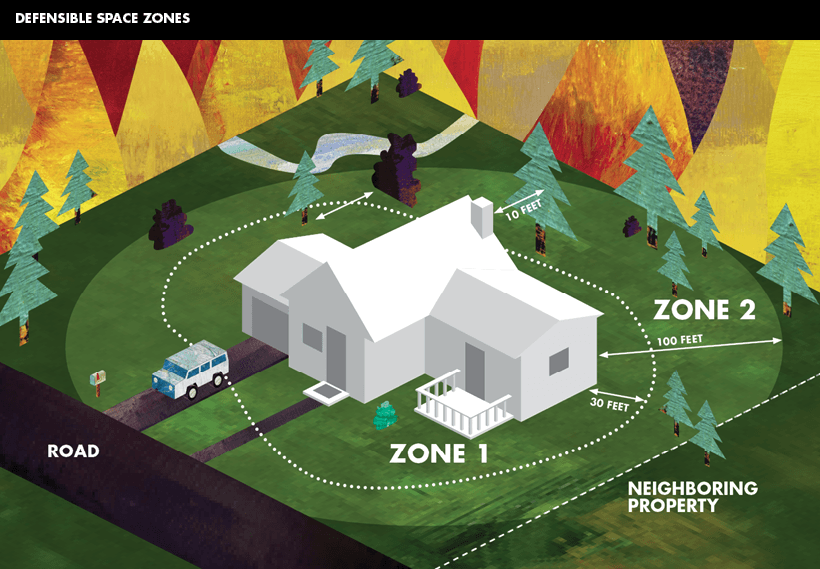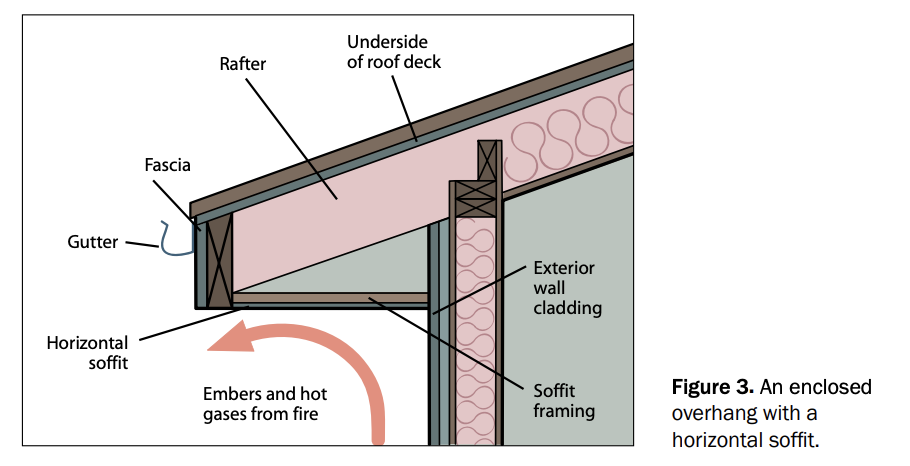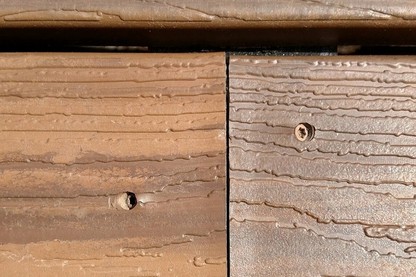Recently, there has been a lot of media coverage of the fires in California this past summer. It seems that wildfires are becoming more commonplace as the West and Northwest get drier. Wildfires are a common, natural, and essential occurrence in our forests. Fire seasons vary widely from region to region and often pose a threat to lives, property, and resources. During an average fire season, hundreds of homes are damaged or destroyed by wildfire, and in extreme fire conditions, as we saw in California, thousands of homes and lives can be destroyed. As our cities grow, homes are being built closer to the wildland urban interface, which only stands to heighten this growing concern.
Wildfires can damage buildings through direct contact, convection, and radiation. Wildfires also send burning embers up into the air that can fall on nearby homes. Plus, there can be large pieces of wind-driven, burning material that can be blown against the house. Traditionally, protecting homes from wildfires have focused on fighting the fire before it reaches the buildings. With the expansion of residential construction into the wildland urban interface, more homes are now at risk from wildfires. No home can be completely fireproof, but implementing a few measures can reduce the potential for damage to the home. Recently the state of Oregon proposed a draft Wildfire Hazard Mitigation code for the purpose of providing some minimum standards for homebuilders.
Some of the key considerations and elements in helping protect a home from a wildfire.
Defensible space: A defensible space is an area around a home in which vegetation and other types of combustible fuels have been treated, cleared, or reduced. Having a landscape management plan helps creates a barrier between a home and a wildfire.

Roofing material: Of all the components of the building envelope, the roof is the most vulnerable in a wildfire because of its surface size and orientation. The probability that a home will survive a wildfire is greatly influenced by the components of the roof assembly. Consider asphalt shingles, slate shingles, metal roofing, or tile, clay or concrete.
Walls: Exterior wall coverings that are noncombustible or fire-resistant and not susceptible to melting are recommended. Concrete, fiber-cement panels or siding, stucco, masonry, and metal are materials that will help reduce a fire.
Soffits and attic venting: Blowing embers and convective and radiant heat can be trapped near eaves and soffits, which can ignite if not constructed of noncombustible or fire-resistant materials. Eaves with short overhangs and flat soffits are recommended. Embers and hot gases can also be blown into vent openings and enter attic spaces and crawlspaces leading to ignition of the interior of the building. Vents need to be constructed of metal products, and have corrosive-resistant metal mesh screens.

Doors: Doors and frames can be ignited in a wildfire, and openings between the door and frame and glass in the door can be penetrated by flames, hot gases, or embers. Installing a fire rated metal door with weather stripping and noncombustible trim are recommended.
Windows: Flames, embers and radiant heat can cause glazing to break. Glazing that breaks can allow easy passage of embers and hot gases into the interior of a building. Insulated and tempered glazing units are recommended to help reduce this possibility
Gutters: Debris such as leaves and pine needles can become trapped in gutters. The debris can be ignited by flying embers during a wildfire, and the fire can spread to the roof. Noncombustible leaf guards over gutters and gutters constructed of noncombustible materials are recommended.
Decks: Embers and hot gases can become trapped under decks. Decks constructed of heavy timber or noncombustible materials are recommended. Isolating the attached structure by surrounding it with noncombustible material such as gravel, brick, and concrete pavers, and enclosing the underside of the deck.

Fences and landscaping: A fence constructed of combustible materials that is attached to or near a home can ignite the home. Fences and walls constructed of noncombustible materials such as concrete, stone, and masonry are recommended. Attaching a fence or wall to the home should be avoided unless the fence or wall is constructed of noncombustible materials
By incorporating common construction practices and fire resistant material that are readily available, we can help ensure the safety of our homes and the animals and people that live in them.